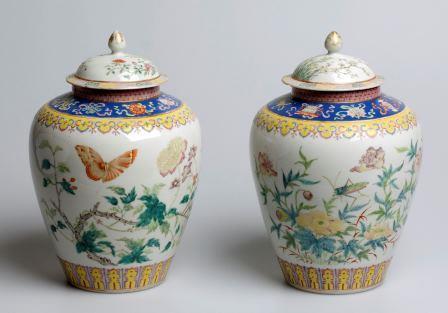Recommendation
In a letter dated 18 October 2006, the Minister for Education, Culture and Science (OCW) asked the Restitutions Committee to issue a recommendation regarding the application for restitution submitted on 10 July 2006 by S.L.-S. en J.S., through their representative R.W. Polak, master of laws. After the death of J.S. on 18 March 2007, his daughter L.E.B.-S. takes his place as applicant (together with S.L.-S. hereafter referred to as ‘the applicants’). Initially, the application for restitution concerned the following objects:
NK 205: bowl
NK 244: box
NK 251: commode
NK 296: dish
NK 505: plate
NK 508 A-B: two beaker vases
NK 510: vase
NK 511: bowl
NK 512: small jug
NK 530 A-B: tobacco pot
NK 532 A-B: two jars and covers
NK 633: miniature cannon
NK 652: armchair
NK 685: tapestry
NK 810 A-B: two armchairs
NK 891: miniature cannon
NK 1074: bordure of a tapestry
NK 1075: portière
NK 1079: tapestry
NK 2131: G. de Witte, Italian landscape with herdsmen
NK 2310: S.J. van Ruysdael, Dune landscape with travellers near Egmond aan Zee
NK 2443: B.C. Koekkoek, View on the Rhine near Xanten
NK 3202: mirror
According to the applicants, these objects were originally part of the trading stock of art dealers J. Stodel v.o.f., established in Amsterdam (hereafter referred to as ‘art dealership Stodel’). Since their return to the Netherlands after the Second World War, the claimed objects have been part of the Netherlands Art Property Collection (hereafter referred to as the ‘NK collection’) under the inventory numbers listed above. According to information from the Netherlands Institute for Cultural Heritage in Rijswijk (hereafter referred to as ‘ICN’), most of these objects can now be found in various government institutions and museums in the Netherlands and abroad, as well as in the ICN depot. Furthermore, the ICN reported that NK 510 and NK 633 are missing and that NK 3202 is effectively no longer part of the NK collection.
